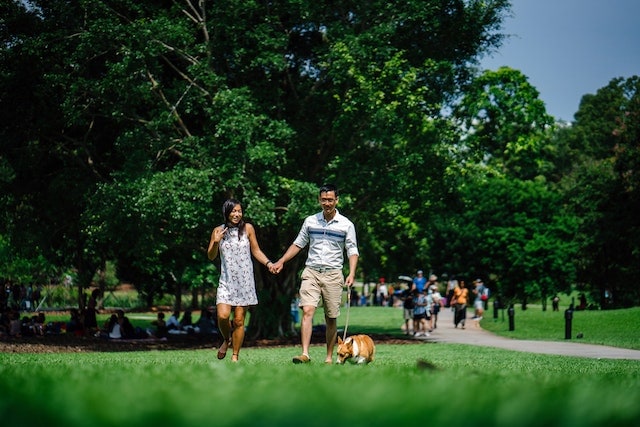Will they think I’m weird or creepy?
What if they don’t want to talk?
What do I even say!?
Want to talk to strangers and improve your social skills?
Having approached thousands of strangers, I know firsthand that talking with strangers can be nerve-wracking:
- Social rejection: Not everyone wants to talk with someone they don’t know. A good % of people will turn you down.
- Social anxiety/awkwardness/shyness: This makes it a lot harder to go up to a stranger.
That being said, starting a conversation with someone you don’t know is way easier than you think 🙂
1. Most people are comfortable sharing about themselves, and many actually love doing so. (Provided that it’s in the right environment and context!)
2. The more you talk with strangers, the better you will get at it. Just like public speaking or party hosting, talking with strangers is a skill that you can practice and improve.
More importantly, it can help you overcome your fear and become more confident — no matter what social situation you walk into. It’s that handy of a social skill 🙂
What makes me uniquely qualified to write about this?
I’ve had social anxiety since young, and while I love therapy, talking to strangers is the No. 1 thing that helped me become less anxious and awkward around people.
Over the last ten years — across three continents — I’ve started conversations with thousands of strangers. I’ve also interviewed well over 700 people for my projects (namely a street journalism project and a book).

Speaking about my experience talking with strangers at TEDx!
I still get nervous when talking to people I don’t know, but it’s a fraction of the crippling fear I had back then.
In this article, I will share step-by-step how you can talk to strangers at a park.
Why talk to strangers at a park?
1. People are less stressed and more attentive.
As the American Psychological Association reported, spending time in nature is incredibly beneficial for our bodies and minds. A meta-analysis of 32 studies proves this further.
2. The quality of conversations is higher.
Studies by multiple researchers show that families have better conversations in natural environments (see here and here).
3. You have multiple topics to naturally start conversations.
This includes but isn’t limited to:
- Physical and mental health
- Sports activities
- Hobbies
- Lifestyle
How do you start a conversation? (4 easy, proven ways)
OK, you said hi… what do you say next?
Here are a few conversation starters I like using. Notice that 1) they aren’t complicated or fancy, since your mind can go blank when you’re nervous. 2) they are environment-specific, which helps you sound natural.
Use or modify any of them based on your preferences!
1. Comment on the park.
- “Wow, this park is so beautiful isn’t it?”
- “This is the best park I’ve been to!”
- “The weather is so good today!”
This is an easy conversation starter since most people can appreciate the beauty of a park, and it doesn’t require them to answer any questions.
This also helps you gauge if they are interested to talk further.
You can follow up with any of the questions below.
2. Ask for directions.
- “Where is <a specific part of the park>?”
- “Do you know where <a specific part of the park> is?”
This is also an easy conversation starter: it’s a close-ended question (yes/no), and most people are open to giving directions.
3. Ask about their favorite spot in the park.
- “What’s your favorite spot in the park?”
- “Which part of the park do you recommend checking out?”
This will depend if they have come to the park before. Before asking for recommendations, ask if they are regulars.
4. Comment/ask about their activity.
- “Great place for <the activity they’re engaged in> right?”
- “Where could I buy <sports equipment they’re using>?”
If they’re engaging in a specific activity — say brisk walking, playing frisbee, or even reading a book — use that to lead the conversation.
I’d start with a casual comment/question before following up with more questions.
Other tips to make it easier to start a conversation
1. See if they have open body language.
If they have their headphones on and/or if they seem fully focused on whatever they’re doing, they might not be receptive to chatting.
On the other hand, if they look back at you — better still, if they smile or nod — chat them up!
Another type of park-goer I love is the leisure walker. They aren’t trying to run a sprint or marathon… they are just strolling around.
2. Talk to pet owners.
Pet owners are proud of their fur babies, and it’s especially common for dog owners to walk their dogs.
You could start with a compliment: “Aww, your dog is so cute!” and follow up with questions about the pet like “how old is s/he?”.

